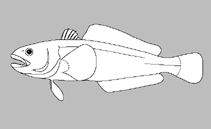http://www.fishbase.org/Summary/speciesSummary.php?genusname=Notothenia&speciesname=neglecta ---> http://192.134.151.83/Summary/speciesSummary.php?genusname=Notothenia&speciesname=neglecta
http://192.134.151.83/Summary/speciesSummary.php?genusname=Notothenia&speciesname=neglecta ---> https://fishbase.mnhn.fr/Summary/speciesSummary.php?genusname=Notothenia&speciesname=neglecta
https://fishbase.mnhn.fr/Summary/speciesSummary.php?genusname=Notothenia&speciesname=neglecta ---> https://fishbase.mnhn.fr/summary/Notothenia-neglecta.html
Notothenia neglecta, Yellowbelly rockcod : fisheries

You can
sponsor
this page
Common name (e.g. trout)
Genus + Species (e.g. Gadus morhua)
-

-
About this page
-
Languages
-
User feedbacks
-
Citation
-
Uploads
-
Related species
-


 Yellowbelly rockcod
Add your observation in
Fish Watcher
Upload your
photos
and
videos
Yellowbelly rockcod
Add your observation in
Fish Watcher
Upload your
photos
and
videos
Google image
 No image available for this species;
No image available for this species;
drawing shows typical species in Nototheniidae.
Teleostei (teleosts) >
Perciformes/Notothenioidei
(Icefishes) >
Nototheniidae
(Cod icefishes) > Nototheniinae
Etymology:
Notothenia:
Greek, 'notos', ou; νοτος, ου), from the south + Greek, 'e 'eutheneia',as or 'euthenia', as (ευθενεια, ας; ευθενια, ας), abundance (P. Romero, pers.comm. 01/16)
;
neglecta:
Named after Dr. Nybelin's feeling that this divergent form of
coriiceps
has been overlooked (Ref.
11892
)
.
Environment: milieu / climate zone / depth range / distribution range
Ecology
Marine; benthopelagic; depth range 1 - 95 m (Ref.
11892
), usually 1 - 90 m (Ref.
11892
). Polar
Southern Ocean: coast of the Antarctic continent, Antarctic Peninsula, South Georgia, South Shetland, South Orkney Islands and Peter I Island.
Length at first maturity / Size / Weight / Age
Maturity: L
m
30.0
range ? - ? cm
Max length : 45.0 cm SL male/unsexed; (Ref.
11892
)
Short description
Morphology
|
Morphometrics
Dorsal
spines
(total): 3 - 7;
Dorsal
soft rays
(total): 37-40;
Anal
spines
: 0;
Anal
soft rays
: 27 - 32. Caudal fin subtruncate or slightly rounded, emarginate in young. Coloration more spectacular compared to other nototheniids. Juveniles with a black blotch on distal end of pectoral fin.
Juveniles found in 1-10 m depth and possibly having a pelagic habit, adults in deeper water (Ref.
11892
). Adults feed on crustaceans and fishes (Ref.
11892
). Spawn once a year (Ref.
57661
). Some information needs to be transferred from N. coriiceps to this species (RF).
Mature females may spawn for the first time from around 6-8 years of age (Ref.
71843
).
Miller, R.G.
, 1993. A history and atlas of the fishes of the Antarctic Ocean. Foresta Institute, Nevada. 792 p. (Ref.
11892
)
IUCN Red List Status (Ref.
130435
)
Not Evaluated
CITES
Not Evaluated
Not Evaluated
Threat to humans
Harmless
Human uses
Fisheries: subsistence fisheries
FAO - Fisheries:
landings
; Publication:
search
|
FishSource
|
Sea Around Us
More information
Countries
FAO areas
Ecosystems
Occurrences
Introductions
Stocks
Ecology
Diet
Food items
Food consumption
Ration
Common names
Synonyms
Metabolism
Predators
Ecotoxicology
Reproduction
Maturity
Spawning
Spawning aggregation
Fecundity
Eggs
Egg development
Age/Size
Growth
Length-weight
Length-length
Length-frequencies
Morphometrics
Morphology
Larvae
Larval dynamics
Recruitment
Abundance
BRUVS
References
Aquaculture
Aquaculture profile
Strains
Genetics
Electrophoreses
Heritability
Diseases
Processing
Nutrients
Mass conversion
Collaborators
Pictures
Stamps, Coins Misc.
Sounds
Ciguatera
Speed
Swim. type
Gill area
Otoliths
Brains
Vision
Tools
E-book
|
Field guide
|
Identification keys
|
Length-frequency wizard
|
Life-history tool
|
Point map
|
Classification Tree
|
Catch-MSY
|
Special reports
Check for Aquarium maintenance
|
Check for Species Fact Sheets
|
Check for Aquaculture Fact Sheets
Download XML
Summary page
|
Point data
|
Common names
|
Photos
Internet sources
AFORO (otoliths) |
Aquatic Commons
|
BHL
|
Cloffa
|
BOLDSystems
|
Websites from users
|
Check FishWatcher
|
CISTI
|
Catalog of Fishes
:
genus
,
species
|
DiscoverLife
|
ECOTOX
| FAO - Fisheries:
landings
; Publication:
search
|
Faunafri
| Fishipedia |
Fishtrace
| GenBank:
genome
,
nucleotide
|
GloBI
|
Google Books
|
Google Scholar
|
Google
| IGFA World Record |
MitoFish
|
Otolith Atlas of Taiwan Fishes
|
PubMed
| Reef Life Survey | Socotra Atlas |
Tree of Life
| Wikipedia:
Go
,
Search
| World Records Freshwater Fishing |
Zoobank
|
Zoological Record
Estimates based on models
Preferred temperature (Ref.
123201
): -1.9 - -1.2, mean -1.7 °C (based on 342 cells).
Phylogenetic diversity index (Ref.
82804
): PD
50
= 0.5078 [Uniqueness, from 0.5 = low to 2.0 = high].
Bayesian length-weight: a=0.00794 (0.00446 - 0.01415), b=3.25 (3.10 - 3.40), in cm total length, based on LWR estimates for this species & (Sub)family-body (Ref.
93245
).
Trophic level (Ref.
69278
): 3.3 ±0.2 se; based on diet studies.
Generation time: 12.1 ( na - na) years. Estimated as median ln(3)/K based on 2
growth studies.
Resilience (Ref.
120179
): Low, minimum population doubling time 4.5 - 14 years (tm=7-8; Fec > 10,000).
Fishing Vulnerability (Ref.
59153
): Moderate vulnerability (42 of 100).
Price category (Ref.
80766
):
High
.
Nutrients (Ref.
124155
): Calcium = 19.2 [10.9, 42.1] mg/100g; Iron = 0.329 [0.160, 0.631] mg/100g; Protein = 17.6 [15.1, 19.7] %; Omega3 = 0.297 [0.146, 0.594] g/100g; Selenium = 12.7 [5.5, 28.9] μg/100g; VitaminA = 18.9 [4.2, 87.4] μg/100g; Zinc = 0.545 [0.375, 0.800] mg/100g (wet weight); based on
nutrient studies.
Back to Search
Random Species
Back to Top
Accessed through:
Not available
FishBase mirror site :
localhost
Page last modified by :
mrius-barile
- 20 July 2016
Fatal error
: Uncaught ArgumentCountError: Too few arguments to function checkEcotox(), 1 passed in /var/www/html/summary/speciessummary.php on line 2304 and exactly 3 expected in /var/www/html/includes/speciessummary.lib.php:2579 Stack trace: #0 /var/www/html/summary/speciessummary.php(2304): checkEcotox() #1 {main} thrown in
/var/www/html/includes/speciessummary.lib.php
on line
2579
|